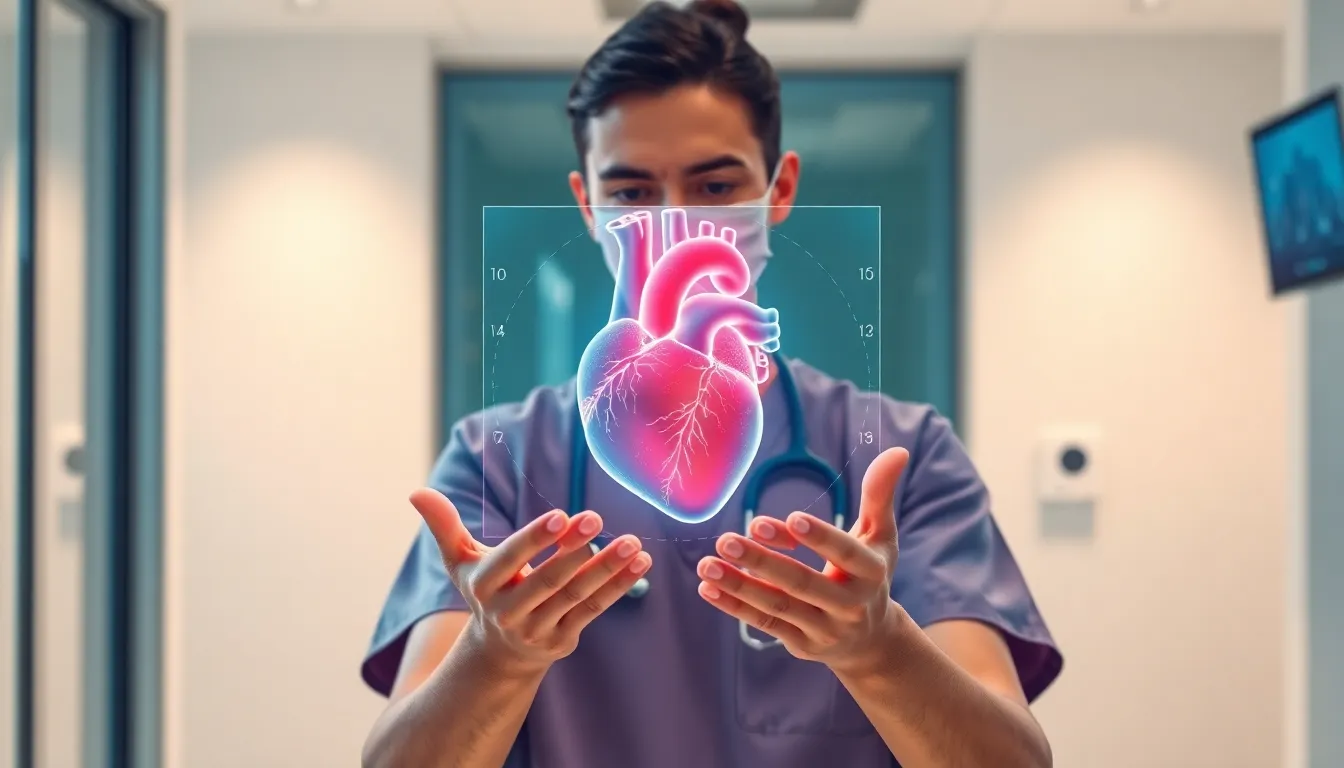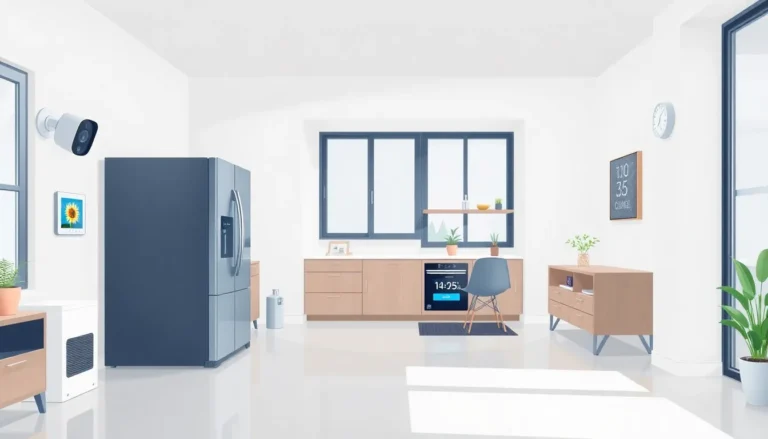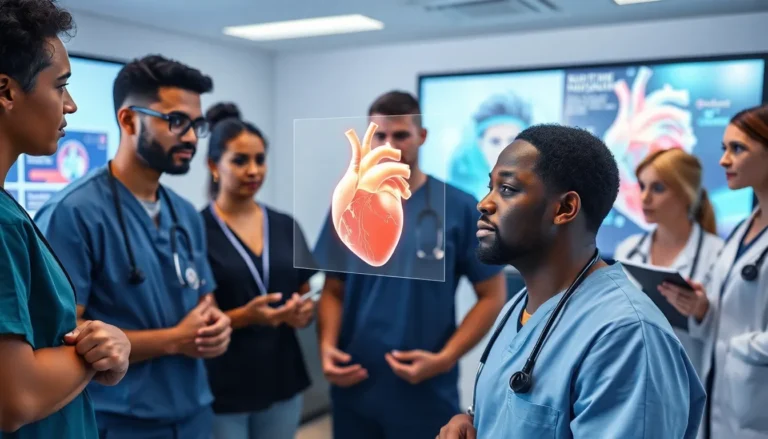Table of Contents
ToggleImagine a world where your coffee machine knows exactly how you like your brew and your fridge reminds you when you’re about to run out of ice cream. Now, throw in some mind-bending holograms, and you’ve got the future of the Internet of Things—welcome to Hologram IoT. This isn’t just tech wizardry; it’s a game-changer that’s set to transform everyday experiences into something straight out of a sci-fi movie.
Understanding Hologram IoT
Hologram IoT denotes an innovative way of integrating everyday devices with holographic technology. This integration enhances user interactions, making them more engaging and personalized.
What Is Hologram IoT?
Hologram IoT blends the Internet of Things with holographic features. This technology enables devices such as smart home appliances to present information in a three-dimensional format. Users can interact with holograms as if they were real, improving user experience significantly. Examples of devices include kitchen gadgets that display recipes in a holographic format and smart mirrors that provide interactive health data.
The Technology Behind Hologram IoT
Hologram IoT relies on several advanced technologies for its functionality. Augmented reality and artificial intelligence play crucial roles in creating and managing holograms. Sensors collect data from user interactions, allowing devices to respond intuitively. Communications protocols ensure seamless connectivity between devices. Most importantly, cloud computing supports data processing and storage, enhancing the efficiency of these interactions.
Applications of Hologram IoT

Hologram IoT showcases various applications across multiple sectors, enhancing user engagement and information accessibility.
Industry Use Cases
Retail environments benefit significantly from Hologram IoT. Interactive displays provide customers with product details in real-time, improving the shopping experience. Industrial settings utilize holographic interfaces for machinery monitoring, enabling technicians to visualize performance metrics without needing physical displays. Logistics operations leverage this technology to streamline asset tracking, presenting data in an easily digestible format. Companies see increased efficiency and reduced errors through these holographic interactions.
Healthcare Innovations
Hologram IoT transforms healthcare delivery by enhancing patient engagement. Medical professionals use holographic models to explain complex procedures, making information clearer for patients. Additionally, remote consultations gain effectiveness when practitioners utilize holograms to visualize diagnostics. Holographic systems assist in training medical personnel by simulating real-life scenarios, offering immersive learning experiences. These innovations promote better outcomes by ensuring patients grasp significant health-related information and by allowing medical staff to communicate effectively.
Advantages of Hologram IoT
Hologram IoT offers multiple benefits that enhance user experiences and improve functionality across various sectors.
Enhanced Data Visualization
Holograms provide clear and immersive representations of data. Users experience complex information in three dimensions, making it easier to comprehend. For instance, in logistics, holographic displays showcase real-time tracking of shipments. This visualization helps in quickly assessing delivery statuses and identifying issues. In healthcare, medical professionals utilize holograms to illustrate anatomical structures, allowing patients to grasp their conditions more effectively. Enhanced data visualization fosters informed decision-making and strengthens understanding across diverse applications.
Improved User Engagement
Hologram IoT significantly boosts user engagement through interactive interfaces. Interactive displays capture attention and invite participation, increasing satisfaction. In retail, customers can explore products by manipulating holographic representations, leading to a more informative shopping experience. Additionally, smart home devices equipped with holographic features provide tailored content, fostering personal connections. Increased engagement translates to enhanced user loyalty and a greater willingness to adopt new technologies. Hologram IoT thus transforms passive interactions into dynamic experiences that resonate with users.
Challenges of Implementing Hologram IoT
Hologram IoT presents certain challenges that developers and businesses must navigate. These challenges include technical limitations and cost considerations.
Technical Limitations
Technical limitations can hinder the implementation of Hologram IoT. Current holographic technologies require high processing power, which can affect device performance. Compatibility issues arise when integrating holograms with existing IoT systems. Delays in data processing may occur during real-time interactions, leading to unsatisfactory user experiences. Furthermore, the accuracy of holograms depends on precise environmental conditions, limiting usage in varying settings. Ensuring robust internet connectivity is essential for effective device communication. Addressing these technical challenges remains crucial for widespread adoption.
Cost Considerations
Cost considerations significantly impact the implementation of Hologram IoT. Developing holographic technology often incurs substantial research and production expenses. Organizations face high costs for specialized equipment and training, which may deter investment. Maintenance and updates for holographic systems can add to ongoing financial burdens. Weighing potential benefits against these costs is necessary for businesses. Smaller enterprises might struggle to justify the investment in hologram capabilities. Balancing innovative features with budget constraints is a critical factor in the successful rollout of Hologram IoT solutions.
The future of Hologram IoT holds immense promise for transforming daily interactions with technology. By merging holographic capabilities with everyday devices, users can expect a more engaging and personalized experience. This innovation not only enhances functionality but also fosters deeper connections between users and their appliances.
While challenges exist in terms of implementation and cost, the potential benefits across various sectors are undeniable. As technology continues to evolve, Hologram IoT could redefine how individuals engage with their environments, making complex information more accessible and interactions more dynamic. Embracing this technology will be key to unlocking its full potential and revolutionizing user experiences.







